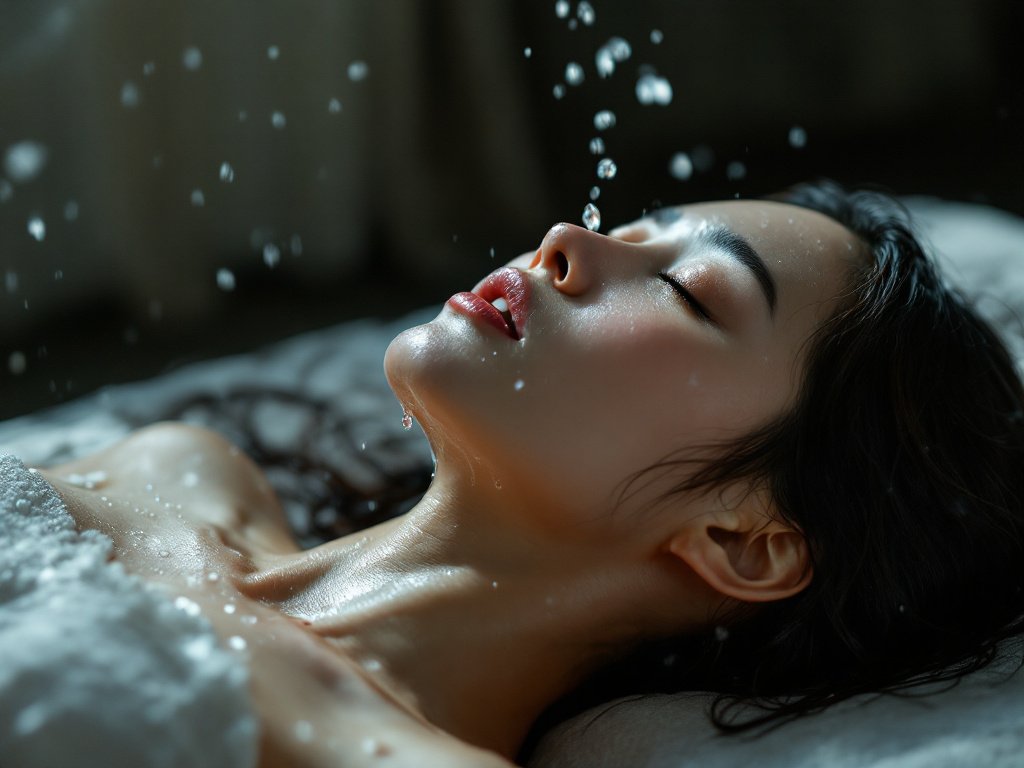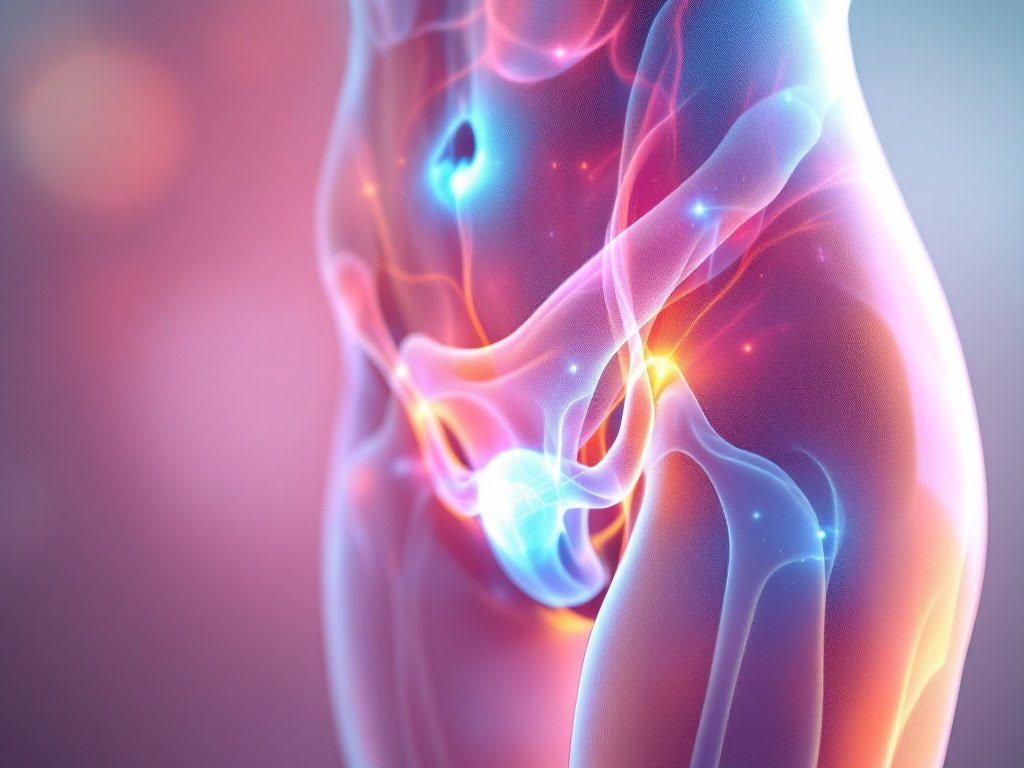
The Science of Squirting: What Happens to Your Body During Orgasm
Introduction
Squirting, often referred to as female ejaculation, has intrigued many, blending curiosity with misconceptions. Understanding what happens during a squirting orgasm is a compelling intersection of physiology and sexual response. Despite its prevalence in popular culture and pornographic media, the science behind squirting remains somewhat murky, fostering a range of beliefs and assumptions. In this section, we’ll delve deeper into the science of squirting and explore the reasons behind this fascinating phenomenon.
Understanding Female Ejaculation
At the core of squirting lies female ejaculation, which refers to the expulsion of fluid from the urethra during orgasm. This response can happen independently of an orgasm or may accompany one, leading to different experiences for different individuals. The fluid expelled during squirting originates primarily from the Skene’s glands, often regarded as the female equivalent of the prostate. These glands surround the urethra and, when stimulated, can release fluid that varies in composition from urine. Research indicates that this fluid can contain elements similar to urine, leading to the ongoing debate about whether squirting is merely urination. However, many women report a distinctly different experience during squirting, often identifying it as a unique form of sexual pleasure rather than a simple physiological function.
The Fascination with Squirting
The fascination with squirting is fueled by its representation in adult films and discussions about sexual empowerment and pleasure. Many view squirting as a hallmark of sexual accomplishment, leading to pressure for some individuals to achieve it. This is particularly noticeable in heterosexual relationships, where male partners often misinterpret squirting as a sign of heightened pleasure or satisfaction. The result is a complex mix of admiration and anxiety surrounding the act itself. However, it’s crucial to recognize that squirting is not an obligatory milestone in one’s sexual journey. Instead, it’s a natural response that varies widely among individuals, with many women finding joy and pleasure without ever producing a squirting orgasm. Ultimately, understanding the science behind squirting can help demystify this topic, encouraging inclusivity and acceptance of all sexual experiences.
Anatomy and Physiology of Squirting

Understanding the science behind squirting requires a closer look at the anatomy involved, particularly the structures that contribute to this phenomenon. This section delves into the roles of the Skene’s glands, the G-spot, and the urethral sponge, highlighting their unique contributions to squirting and sexual pleasure.
The Role of the Skene’s Glands
The Skene’s glands, often referred to as the female prostate, play a crucial role in squirting. These small glands are located near the urethra, and their primary function is to secrete a fluid that contributes to female ejaculation. During sexual arousal and orgasm, stimulation of the G-spot can trigger these glands to release their fluid through the urethra.
Interestingly, the fluid produced by the Skene’s glands contains enzymes, prostate-specific antigen (PSA), and other substances similar to those found in male prostatic fluid. While there is still some debate about the exact nature of this fluid and its relationship to urine, many researchers agree that it’s distinct and not merely an involuntary release of bladder contents. Understanding the Skene’s glands is essential for anyone interested in exploring their own body or that of a partner.
G-Spot: Myth or Reality?
The existence of the G-spot has been a topic of contention in sexual health discussions for decades. Named after Dr. Ernst Grafenberg, who described it in the 1950s, the G-spot is believed to be an erogenous zone located on the anterior wall of the vagina, just a few inches inside. Stimulation of this area can lead to heightened arousal and, for some women, squirting orgasms.
Research on the G-spot varies widely, with some studies asserting its existence while others argue that it may simply be an area that leads to the stimulation of internal structures, particularly the urethral sponge and surrounding tissues. Whether the G-spot is a distinct anatomical entity or a complex interplay of surrounding structures, many individuals report enhanced sexual pleasure and the potential for squirting when this area is stimulated during sexual activity.
The Urethral Sponge and Its Functions
The urethral sponge is a spongy tissue located around the urethra, encompassing the Skene’s glands. It consists of erectile tissue similar to the erectile tissues found in the clitoris. During sexual arousal, increased blood flow to this area can result in swelling and heightened sensitivity. The compression of this tissue contributes to pleasurable sensations during penetration and stimulates the Skene’s glands, potentially leading to squirting.
This sponge-like structure plays a significant role in female sexual anatomy, especially regarding the potential for orgasm. When stimulated, the urethral sponge can amplify feelings of pleasure and may also aid in the expulsion of fluids during climax. Understanding its function enhances awareness of the female orgasm experience, including the mechanics of squirting.
What Happens to the Body During a Squirting Orgasm

Squirting orgasms can be fascinating from a scientific perspective. Understanding what happens to your body during these intense moments of release is essential for appreciating the full spectrum of sexual experiences. Let’s dive into the mechanics of squirting orgasms, exploring the physical, hormonal, and neurological changes that occur during this unique response.
The Ejection Mechanism Explored
The ejection mechanism during a squirting orgasm primarily involves the Skene’s glands, often referred to as the female prostate. Located near the urethra, these glands produce a clear fluid that is expelled during climax. Studies suggest that this emission occurs through rapid contractions of the pelvic floor muscles and the urethra. When an individual reaches significant sexual arousal, the bladder fills but remains relaxed, allowing the fluid to build up within the Skene’s glands. As the orgasm builds, these contractions intensify, leading to the forceful expulsion of fluid from the urethra, resulting in squirting. Understanding this process helps demystify a natural part of sexual expression, separating it from misconceptions that it is merely urination.
Hormonal and Neurological Changes
During a squirting orgasm, the body undergoes various hormonal and neurological changes that enhance pleasure. The brain releases a cocktail of hormones, including oxytocin and dopamine, which promote feelings of pleasure and bonding. Neurotransmitters like gamma-aminobutyric acid (GABA) play a crucial role in regulating nerve impulses, contributing to heightened sensations during climax. Moreover, sexual arousal causes increased blood flow to the genital area, enhancing sensitivity. As these changes occur, individuals may experience an amplification of physical sensations, making the squirting experience not just about fluid release but a culmination of pleasurable physical and neurological responses.
Physical Reactions and Signs
Physical reactions during squirting orgasms can vary greatly among individuals but often include a series of recognizable signs leading up to and during the event. Many report an intense buildup of pressure in the pelvic area, often likened to the sensation of needing to urinate. This pressure indicates increased arousal and the imminent climax. Additionally, the body may exhibit involuntary muscle contractions, particularly in the vaginal and abdominal regions. Other signs can include a rapid increase in heart rate, breathing changes, and a greater sense of relaxation or heightened focus on bodily sensations. Recognizing these signs can enhance one’s sexual awareness and enjoyment, leading to a more fulfilling sexual experience.
Scientific Studies and Debates

Understanding the phenomenon of squirting and female ejaculation is not just a matter of popular culture; it’s an area rich with scientific inquiry and debate. Throughout history, various studies have explored this intriguing aspect of female sexuality, revealing complex biological processes at play during orgasm. Let’s take a closer look at the historical perspectives that laid the groundwork, the recent findings that continue to challenge our understanding, and the ongoing discussion surrounding the nature of the fluids involved.
Historical Perspectives on Female Ejaculation
The discussion of female ejaculation is not new; it dates back centuries. Historical texts often mentioned a “feminine fountain,” referencing fluid expulsion during climax long before the term “squirting” entered modern lexicons. In the 17th century, physician Levinius Lemnius documented the existence of a gland in women that could lead to this phenomenon, later identified as Skene’s glands. Fast forward to the mid-20th century, when researchers Alfred Kinsey and William Masters and Virginia Johnson began formally studying female sexual responses, including ejaculation. Their work provided the first empirical evidence that fluids expelled during female orgasm were not simply urine but constituted a distinct physiological response. This historical backdrop established the foundation for ongoing debates and scientific exploration into female ejaculation.
Recent Research Findings
In the past two decades, research into squirting has expanded dramatically, yielding new insights. A pivotal study conducted in 2014, for instance, utilized ultrasound imaging to observe women during sexual arousal. While the findings indicated that some of the fluid expelled during squirting did have characteristics similar to urine, it also noted the presence of prostate-specific antigen (PSA) and other substances indicative of ejaculate from paraurethral glands. Such studies illuminate the complexity of female ejaculation, establishing that while the origin may involve the bladder, the fluid itself is unique. This growing body of research highlights the multifaceted nature of female sexual response and suggests that squirting serves various purposes and experiences among different individuals.
The #NotPee Debate: Is It Really Just Urine?
The so-called #NotPee debate has garnered significant attention online and in academic circles. This discourse centers on whether the fluid expelled during squirting is simply urine or a distinct substance. Some studies have likened the expelled fluid to urine due to its chemical composition, as certain elements such as urea and creatinine can be present. However, proponents of the #NotPee movement emphasize the unique context and experience of squirting, arguing that even if elements of urine are involved, the overall experience is fundamentally different from urination. For many women, the act of squirting feels distinctly tied to their sexual pleasure and orgasm, rather than being an involuntary act akin to passing urine. This juxtaposition has led to a broader understanding of the complexity surrounding female sexuality, urging society to look beyond stigmas and misconceptions surrounding female ejaculation.
In summary, scientific exploration into squirting reveals a rich tapestry of history, ongoing research, and a determined effort to frame this phenomenon within a broader understanding of female sexual health and pleasure.
Techniques to Encourage Squirting

Embarking on the journey to experience squirting can be both thrilling and daunting. Understanding the techniques involved can help you navigate the physical and emotional aspects of this sexual phenomenon. Here, we’ll explore practical steps—from preparing your mind and body to employing effective stimulation methods and addressing psychological barriers.
Physical and Mental Preparation
Before attempting to squirt, it’s vital to prepare both mentally and physically. Start by ensuring you’re in a comfortable and safe environment, as your surroundings play a crucial role in sexual pleasure.
Engaging in deep breathing or meditation can help to calm any anxieties you might have, allowing you to focus entirely on the sensations in your body. Hydrating properly before the experience is also essential; drinking water can increase your likelihood of squirting, as it ensures that your body has enough fluid to expel.
Furthermore, it’s important to warm up through foreplay. Engage in activities that excite you, such as sensual massage or kissing, to enhance your overall arousal. When you’re fully in tune with your body and relaxed, the journey to squirting becomes more enjoyable.
Effective Stimulation Techniques
Knowing the right stimulation techniques is key to encouraging squirting. Many suggest starting with G-spot stimulation, which is often credited for eliciting squirting orgasms. This sensitive area is located about two to three inches inside the vaginal canal on the belly-button side. Using fingers or a curved sex toy, apply firm pressure while moving in a “come hither” motion.
In addition to G-spot stimulation, incorporating clitoral stimulation can significantly enhance arousal. This might include circular motions with fingers or a vibrating toy, ensuring that pressure is consistent and pleasurable. Some women find they can squirt by solely using clitoral stimulation, so don’t hesitate to explore various combinations that work for you.
Communication with your partner about what feels good is also essential. Adjustments to speed, pressure, and the type of touch can make all the difference in achieving that climactic moment.
Overcoming Psychological Barriers
Many potential squirters struggle with mental hurdles that can inhibit their experiences. Fears about embarrassment or judgment can create tension, making it more difficult to relax and enjoy sexual activities. It’s essential to let go of any preconceived notions about squirting and embrace the experience as part of personal sexual exploration.
Consider journaling about your feelings surrounding squirting or discussing them with a trusted friend or partner. Open conversations about pleasure without judgment can foster a more supportive environment. Additionally, focusing on your own pleasure rather than the outcome can alleviate pressure and lead to more fulfilling experiences, whether or not squirting occurs.
In summary, by preparing your body and mind, using effective stimulation techniques, and addressing psychological barriers, you create the perfect setting for encouraged squirting. Remember, it’s all about pleasure, not performance.
Cultural and Social Perspectives

Understanding the cultural and social perspectives surrounding squirting requires a look at how it is portrayed in popular media, the misconceptions that persist, and the themes of empowerment and acceptance that are gaining traction.
Squirting in Popular Media
Squirting has become a prominent feature in various forms of popular media, particularly in adult entertainment. Over the years, it has been sensationalized, often portrayed as an ultimate sign of female pleasure and sexual achievement. Many adult films have included squirting scenes that emphasize the aesthetic appeal of the act, leading to unrealistic expectations in real-life sexual experiences. This focus can create an impression that squirting is a common occurrence, furthering the idea that the ability to squirt equates to sexual prowess. However, such dramatizations can be misleading. While some individuals can achieve squirting through sexual stimulation, it is not an experience that every person with a vulva can replicate or desires to pursue. Recognizing the difference between entertainment and reality is crucial for fostering a healthier understanding of sexuality.
Misconceptions and Myths
Misconceptions about squirting are rampant and often stem from societal norms that fetishize female sexuality. One common myth is that squirting is synonymous with orgasm; however, these two experiences are distinct and may not always occur simultaneously. Some individuals squirt without reaching orgasm, while others may experience intense orgasms without squirting at all. Additionally, various beliefs persist that it is simply urine. Research has shown that female ejaculate can contain components of urine but is largely comprised of fluids from the Skene’s glands. This complexity is often lost in translation, leading to misunderstandings about what squirting truly is. By debunking these myths and promoting factual information, we can help individuals embrace their sexual experiences without pressure or shame.
Empowerment and Acceptance
In recent years, there has been a growing movement toward empowerment and acceptance regarding female sexuality, including squirting. This shift invites individuals to embrace their bodies and their unique sexual experiences without fear of judgment. For many, acknowledging their bodies’ capabilities and sometimes surprising responses can lead to greater sexual satisfaction and self-acceptance. Conversations around squirting are moving away from performance-based expectations to a more inclusive dialogue that emphasizes personal comfort and pleasure. By normalizing the variability in sexual experiences, we can cultivate an environment where individuals feel empowered to explore their sexuality authentically, whether they squirt or not. This message of acceptance is essential in challenging the outdated standards that have historically defined female sexual worth.
Conclusion
Understanding the phenomenon of squirting is crucial for debunking myths and fostering a healthier view of female sexual health. As we’ve explored, squirting isn’t just a sensational act to be exploited in adult entertainment; it’s a genuine physiological response that can enhance sexual experiences for some women. Acknowledging such realities contributes to a more inclusive conversation that values female pleasure and comfort.
The Importance of Understanding Female Sexual Health
Female sexual health encompasses a wide range of experiences and responses that deserve recognition and respect. Understanding how squirting and female ejaculation function biologically helps remove the stigma surrounding them. It empowers individuals to embrace their bodies and experiences without shame. By educating ourselves and others, we can promote a more nuanced view of sexuality that includes diverse expressions of pleasure. For instance, knowing that squirting can occur independently of orgasm helps destigmatize variations in sexual responses, reinforcing that enjoyment and satisfaction can manifest in many forms, not just the stereotypical climax.
Encouraging Open Conversations About Squirting
Open discussions about squirting and female sexual health foster an environment of acceptance and exploration. Encouraging these conversations among partners, friends, and within educational settings can help dismantle persistent myths. By sharing personal experiences or misconceptions, individuals can learn from one another and dispel harmful stereotypes. Engaging in dialogue not only enhances understanding but also supports those who may feel embarrassed or confused about their own responses. Overall, a commitment to talking openly about squirting and female sexuality helps normalize these experiences, ultimately contributing to healthier, more informed sexual relationships.
Additional Resources
Exploring the phenomenon of squirting can leave many with questions about their own experiences and the science behind it. To deepen your understanding, here are some valuable resources that include books, online communities, and workshops.
Books and Academic Articles
Several informative books and scholarly articles delve into the science of female ejaculation and squirting. One notable title is The Clitoral Truth by Rebecca Chalker, which provides a comprehensive overview of female anatomy and the mechanics of female sexual response. Another recommendation is Squirting: It’s Easier than You Think by Raine Leigh, a practical guide that offers tips and perspectives for women interested in exploring this aspect of their sexuality.
For those who enjoy academic research, the Journal of Sexual Medicine frequently publishes studies related to female ejaculation, sensory experiences during orgasm, and the physiological processes involved. These articles often present a scientific lens through which to better grasp what occurs in the body during an orgasm that includes squirting.
Online Communities and Support Networks
Engaging with online communities can provide support and shared experiences around squirting. Websites like Reddit host forums such as r/sex and r/AskWomen where individuals can anonymously ask questions, share personal experiences, and discover advice related to squirting. Additionally, Facebook groups focused on sexual health and education also serve as platforms to discuss topics related to squirting openly while offering a sense of community among members.
Moreover, websites dedicated to sexual education—like O.school—provide articles and videos that cover a wide range of sexual topics, including squirting. The depth of shared knowledge from these communities can help dispel myths and make the journey into understanding this phenomenon more relatable and less isolating.
Workshops and Expert Interviews
Participating in workshops led by sexual health educators can also be incredibly beneficial. Organizations like the Pleasure Chest and local sex shops often organize classes focused on sexual exploration, including squirting, intimacy, and techniques designed to enhance sexual experiences. These workshops can provide hands-on learning in a supportive environment.
Additionally, many educators and sex therapists share their expertise through interviews on podcasts or YouTube channels. Shows like Sex with Emily and The Pleasure Mechanics often feature episodes discussed by experts who explain the physiological aspects of squirting, share tips on how to achieve it, and address common misconceptions. Listening to these insights can provide valuable knowledge and boost your confidence in exploring your sexual body.